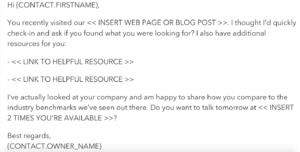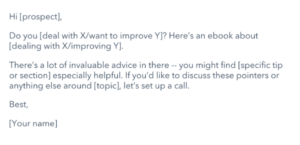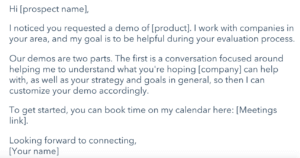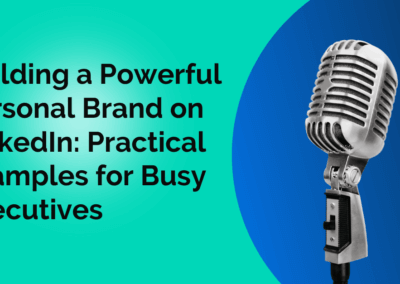We’ve all been there. You walk into a department store — just to browse. Within moments, an overzealous salesperson is pressing you to buy something that you’ve barely glanced at. Immediately put off, you’re scanning the store for the nearest exit.
This logic translates to B2B companies. A business can claim, “oh that person just wasn’t the right fit,” but HubSpot asserts that 50% of leads are qualified — just not ready to buy. For this reason, it’s imperative your company understands the difference between marketing qualified leads (MQLs) and sales qualified leads (SQLs).
An MQL is someone who meets the demographics of your ideal customer profile — the marketing term for this is “buyer persona” — and has shown meaningful engagement with your company. Examples of an MQL include signing up for your newsletter or downloading your ebook because these actions show initiative from the prospect to educate themselves on your industry.
An SQL is someone who meets the demographic criteria and has completed an action(s) that translates to, “I want to speak with sales.” Respond to actions that indicate the prospect wants to know how your company solves their problem– downloading a pricing guide or requesting a demo are just two examples that signal this type of interest.
What differentiates an MQL from an SQL will differ from company to company. The important thing is that marketing and sales are on the same page for how both are defined. Lead scoring makes this possible by enabling companies with a systematic way of differentiating the two.
What is lead scoring?
Lead scoring is the practice of assigning a point value to individual leads according to the information they’ve given you and how they’ve interacted with your website. This score helps your team prioritize leads by putting them into different buckets — MQLs, SQLs, and neither.
How you define what triggers an MQL versus an SQL will change based on the needs and capabilities of your company. For example, if your marketing strategy is mature and you receive thousands of MQLs a day consider increasing the amount of engagement someone must show before triggering that response.
With so many moving parts it can be hard to even know where to start. Luckily, HubSpot has created a lead scoring algorithm to make the process simpler. You can use the software to help with manual lead scoring or you can leave all the heavy lifting up to HubSpot.
Congratulations — you’ve sorted your MQLs from your SQLs! Now you must customize an approach for both types, but how?
The Right Way to Follow up With MQLs:
Don’t be the department store salesperson. MQLs are still just browsing and forcing them to the next stage will only drive them away. At the same time, it’s okay to reach out directly. Consider this part of your lead nurturing strategy. According to Forrester Research, “companies that excel at lead nurturing generate 50% more sales-ready leads at 33% lower cost.”
Be confident knowing that someone who triggers an MQL notification knows what your company does and is trying to learn more. Reach out with the goal of mutually assessing the fit of the potential partnership while providing them with educational resources. There are many different ways to do this, but I’m only going to provide you with two options to start.
The first option is to send a welcome email when someone first triggers an MQL notification in your system. Here’s an example from HubSpot:

Notice this person encourages the prospect to continue the relationship by providing a clear way to access additional information.
How do you nurture a lead between the welcome email and when they move to the SQL stage? The most important thing is to stay fresh in their minds. Instead of sending a response to a particular action, consistently provide content they would find interesting. Here is an example:

Research consistently shows that “a person needs to know you, your reputation, and your product or service before he/she is willing to make a purchase.” Doing this requires consistently being in the lead’s line of sight. Forwarding content to your MQLs is the simplest way to do this.
Side note: Notice that both emails are individually addressed and appear to come from a real person. Personalizing these points of contact creates the framework for building relationships — which results in MQLs converting to SQLs.
The Right Way to Follow up With SQLs:
Finally, the lead is ready to hear your pitch. Your sales team’s job is to connect the dots for the customer and fill in knowledge gaps. They want to be sure that your product will address their pain points. Simply asking them, “so how did you like that ebook?” won’t cut it. Build the conversation around an action(s) they completed which triggered the SQL notification. For example, let’s say the action was a free demo request. Shoot them an email like this:

There are two key things to notice here:
-
- Expectations for the call are set beforehand: This puts the lead at ease with the process. It also helps them prepare accordingly for the call.
- The goal is to help the customer: This is a sales call, but coming from a stance of trying to help them will allow you to understand their needs and how your company fits with them.
The Bottom Line:
The difference between an SQL and an MQL is murky. That’s why it’s imperative for your company to create a universal definition that sales and marketing stick to. Creating a definition strikes the perfect balance between educating leads and closing a deal.
Moving someone from the awareness stage of the buyer’s journey to the conversion stage can feel like you’re walking on eggshells — one false move and the lead is gone. That’s why it’s important to have experts on your side to optimize your marketing strategy. Contact us to learn how we can help you develop a strategy to reach your business growth goals.




